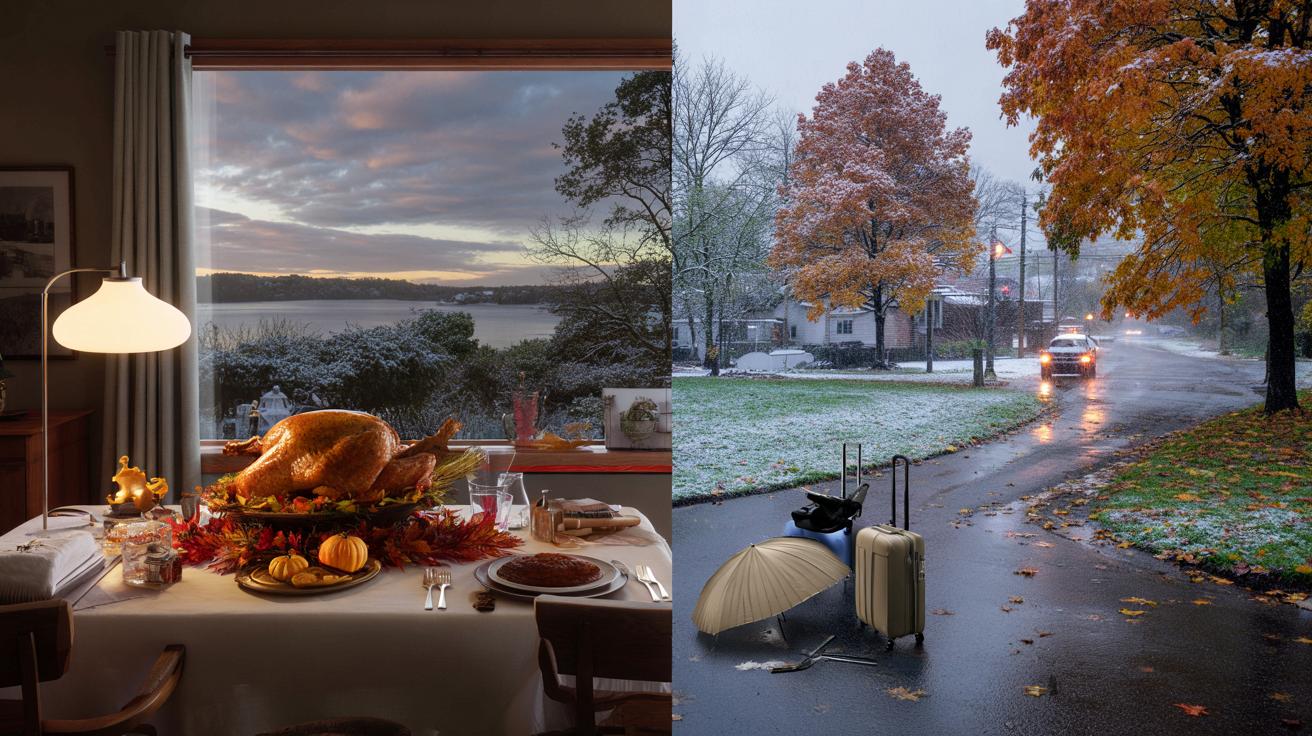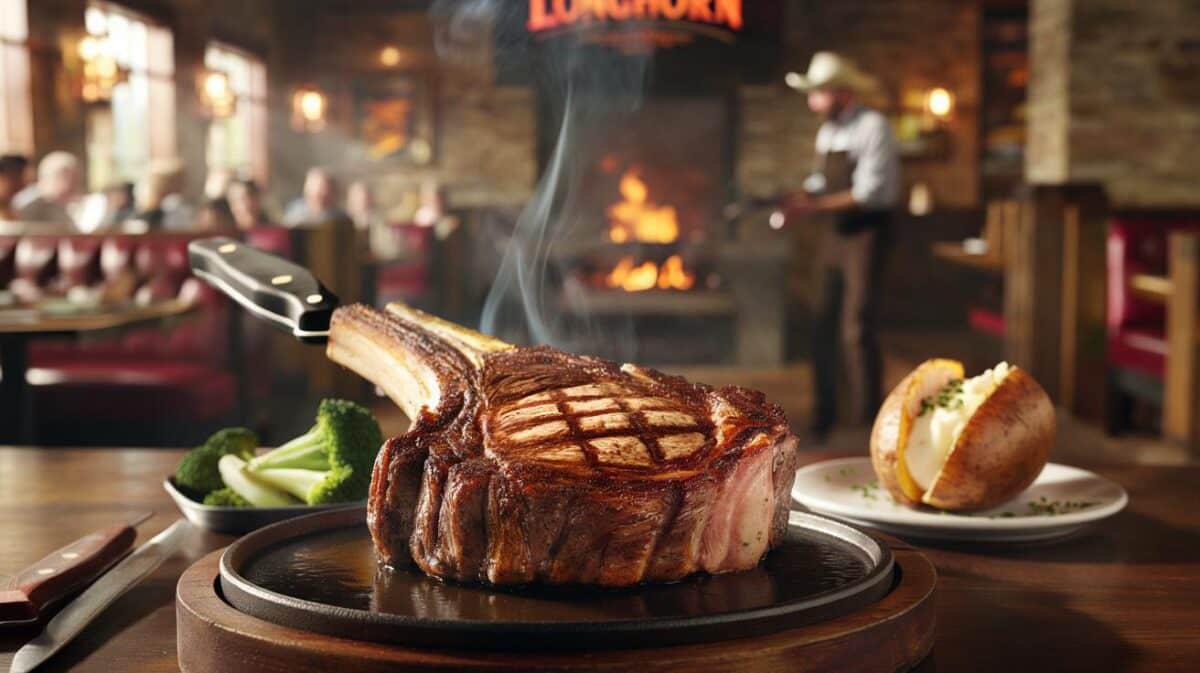For millions across the US, Thanksgiving is the pivot between crisp autumn and full-bore winter. The Old Farmer’s Almanac has its long-range call on the holiday week and the season’s first flakes — and travellers, hosts, and school-run planners want to know which way the wind is turning.
The man at the corner of the Boston Public Garden was feeding the ducks, collar turned up, eyes lifted towards a sky that felt heavier than the headlines. I’d been watching too — the late-November light thin as paper, the air with that metallic bite that means the season is turning. People talk almanacs with a half-smile in New England, half faith and half fun, but they still check the dates before booking flights or brining a bird. The Old Farmer’s Almanac says it has a read on Thanksgiving 2025 and hints on the first snow. The sky held its breath.
Thanksgiving 2025: What the Old Farmer’s Almanac hints at
Thanksgiving falls on 27 November in 2025, and the Almanac’s late-November outlook sketches a familiar map: chillier, storm-prone air likely across the Upper Midwest, Great Lakes, and interior Northeast, with the South and much of the West leaning milder and wetter. It’s the sort of pattern that decides if you get slush on the pavement or a dry, golden afternoon for backyard football. A **White Thanksgiving** is less a blanket promise, more a regional mood swing.
Take Chicago. Its climatological first measurable snow hovers in mid-November, so a holiday flurry isn’t rare, only fussy. Push east to Buffalo and the tug of the lakes can drum up surprise bands that turn quiet streets into snow globes in an hour. Down in Atlanta, Thanksgiving is more about rain risk and crisp mornings than scraping windscreens. One family’s drive from Minneapolis to Madison might start under salted bridges; another from Raleigh to Richmond just packs a light jacket and an umbrella. Same day, different worlds.
What sets the scene in 2025 is the broader climate chessboard. ENSO signals for late 2025 lean away from a strong El Niño pattern, nudging forecasters to watch for neutral-to-cool Pacific conditions that often sharpen northern cold snaps and shift storm tracks over the central and eastern US. A warm Atlantic and early-season snow cover in Canada can also load the dice for Great Lakes squalls. Long-range outlooks don’t predict a single storm; they tilt the odds for certain kinds of weather. Read the tilt, not the tea leaves.
When to expect the first snow — and how to plan around it
Here’s a practical way to time that first brush with winter. Pair the Old Farmer’s Almanac region for your area with your local National Weather Service “first measurable snow” average, then watch the seven-to-ten-day model guidance for confirmation. If you’re in Minneapolis, “first measurable snow” often clocks in early November; in New York City it trends to early December; Denver gets its opener shockingly early some years, then nothing for weeks. The Almanac gives you the lean, while short-range forecasts seal the deal.
We’ve all had that moment when the weather app says one thing and the sky does another. The biggest mistake is treating a long-range outlook like a day-by-day schedule. The second is waiting until the night before Thanksgiving to look at road conditions. Let’s be honest: nobody really does that every day. Start with broad expectations, then tighten the plan 5 days out, then 48 hours out. By the time the cranberry sauce is cooling, you’ll know if it’s de-icer or sunglasses at the top of the bag.
Think in scenarios, not certainties. If you’re travelling through the Great Lakes or interior Northeast, pencil in a window for **lake-effect snow** bursts and build a buffer. If you’re hosting in Denver or Salt Lake City, elevation matters — the foothills can get a first dusting while downtown stays dry. Below is the kind of mantra pros use to stay sane:
“Long-range outlooks aren’t promises. They’re probabilities that help you make better choices earlier.”
- Check your region in the Old Farmer’s Almanac, then cross-reference with your local NWS first snow dates.
- Track ensemble forecasts (multiple model runs) from day 10 to day 3 for trend, not exact totals.
- Book travel early with no-fee change options; shift by 12–24 hours if the storm track tightens.
- Pack winter-ready essentials: scraper, blanket, torch, battery pack, and road salt for the drive.
- For flyers: target early departures and nonstop routes to dodge cascading delays.
The first flakes by region: likely windows, real-life stakes
Upper Midwest and Great Lakes: The first measurable snow often lands from late October to mid-November, which means Thanksgiving week can be the season’s first “real” winter travel test. The Almanac’s late-November lean towards colder, stormier bursts here suggests fast-hitting clipper systems and the risk of **first measurable snow** for late arrivals in places like Detroit, Milwaukee, and Cleveland. It’s the kind of pattern where a sunny morning can become a slick evening commute.
Northeast: Coastal cities run later — Boston and New York typically don’t clock their first measurable snow until late November into early December, with Albany and the interior turning earlier. For Thanksgiving 2025, the Almanac’s quieter coastal signal but livelier interior tone points to a split screen: cold rain along I‑95, paste-like snow inland from the Berkshires into Vermont and northern Pennsylvania. A metro turkey trot might still be on, while the hill town four miles away wakes up to a whitening lawn.
West and Rockies: The first snow story is mostly altitude. The high country in Colorado, Utah, and the Sierra often sees September and October snows, with valleys waiting longer. Late November can bring one of those all-day, low ceiling storms that lay down a clean first coat along the Front Range, then fade to drizzle in Albuquerque and Phoenix. Pacific Northwest lowlands stay mostly in the chilly rain lane, with mountain passes doing the heavy lifting — and the road closures.
The bigger picture for late autumn 2025
Thanksgiving sits at the fault line between seasons, and the Almanac is trying to read the tectonics beneath it. The signal for the holiday window in 2025 says: colder shots and fast-moving systems for the northern tier, milder spells and rain for much of the South and West, and a live wire around the lakes and interior Northeast. That’s a useful sketch, not a street map. Winter likes to keep its secrets until the last mile.
What matters most is how you turn that sketch into choices. If the odds lean snow where you’re headed, travel a day earlier, pick morning flights, and plan indoor backup games for the kids. If your region trends mild, don’t treat that as a pass — cold rain can ground planes and turn motorways into glare. Share the forecast with family, not to scare anyone, but to set a pace that feels human. The day tastes better when you’re not sprinting to catch it.
| Point clé | Détail | Intérêt pour le lecteur |
|---|---|---|
| Thanksgiving 2025 pattern | Colder, more active in the Upper Midwest/Great Lakes/interior Northeast; milder, wetter South and parts of the West | Sets expectations for driving and flight risk during the holiday window |
| First snow timing | Early Nov for Upper Midwest; late Nov–early Dec for coastal Northeast; altitude-driven in the West | Helps judge when to prep cars, routes, and guest arrival plans |
| Planning strategy | Blend Almanac regional signals with NWS averages and 7–10 day model trends | Turns a broad forecast into concrete, low-stress decisions |
FAQ :
- What does the Old Farmer’s Almanac say about Thanksgiving 2025?The late-November outlook leans colder and potentially stormy across the Upper Midwest, Great Lakes, and interior Northeast, with milder, wetter tendencies across much of the South and West. Think probabilities, not promises.
- Is a White Thanksgiving likely in the Northeast?Along I‑95 from Washington to Boston, odds favour cold rain more than snow; inland and higher elevations have a better shot at flakes or a light accumulation, especially if a quick-moving system lines up.
- When will the first snow likely arrive in the Midwest?Many Upper Midwest cities see their first measurable snow from late October to mid-November. That puts Thanksgiving week in the “not surprising” zone for a first or second event.
- How reliable are long-range forecasts like the Almanac?They’re useful for setting risk levels by region and week, but they don’t replace short-range forecasts. Use them to plan, then refine with 5‑day and 48‑hour updates.
- Should I change travel plans based on the Almanac alone?No. Use it as a nudge. Hold flexible bookings, watch the 7–10 day trends, and make final calls within 2–3 days of travel when the track and temperatures sharpen.









Helpful breakdown on neutral-to-cool Pacific conditions and the warm Atlantic. Quick Q: for the Great Lakes, would you expect more short clipper setups or a bigger synoptic event around Nov 27? Trying to decide if I should buffer my Detroit–Cleveland drive by a day.